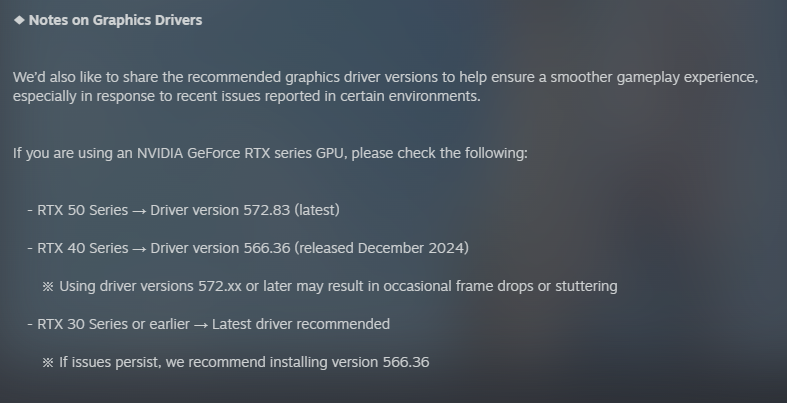arstechnica.com
A near miss Europes first private launch company is learning to embrace failure "Today, we know twice as much about our launch system as yesterday before launch." Stephen Clark Mar 31, 2025 12:26 pm | 1 A fireball rises over Andya after the crash of Isar Aerospace's Spectrum rocket. Credit: Isar Aerospace A fireball rises over Andya after the crash of Isar Aerospace's Spectrum rocket. Credit: Isar Aerospace Story textSizeSmallStandardLargeWidth *StandardWideLinksStandardOrange* Subscribers only Learn moreThe first flight of Isar Aerospace's Spectrum rocket didn't last long on Sunday. The booster's nine engines switched off as the rocket cartwheeled upside-down and fell a short distance from its Arctic launch pad in Norway, punctuating the abbreviated test flight with a spectacular fiery crash into the sea.If officials at Isar Aerospace were able to pick the outcome of their first test flight, it wouldn't be this. However, the result has precedent. The first launch of SpaceX's Falcon 1 rocket in 2006 ended in similar fashion."Today, we know twice as much about our launch system as yesterday before launch," Daniel Metzler, Isar's co-founder and CEO, wrote on X early Monday. "Can't beat flight testing. Ploughing through lots of data now."Isar Aerospace, based in Germany, is the first in a crop of new European rocket companies to attempt an orbital launch. If all went according to plan, Isar's Spectrum rocket would have arced to the north from Andya Spaceport in Norway and reached a polar orbit.But officials knew there was only a low chance of reaching orbit on the first flight. For this reason, Isar did not fly any customer payloads on the Spectrum rocket, designed to deliver up to 2,200 pounds (1,000 kilograms) of payload mass to low-Earth orbit. Isar Aerospace's first Spectrum rocket climbs away from Andya Spaceport in Norway. Credit: Isar Aerospace/Brady Kenniston/NASASpaceflight.com Duck and coverThe launch began with liftoff from Andya Spaceport at 12:30 pm local time (6:30 am EDT, or 10:30 UTC). The rocket's nine engines, burning a mix of liquid propane and liquid oxygen, throttled up to generate more than 150,000 pounds (675 kilonewtons) of thrust as Spectrum began a vertical climb from the launch pad.The first visual sign of trouble appeared about 15 seconds later as the 92-foot-tall (28-meter) rocket started to wobble on its axis. The exhaust plume from Spectrum's main engines also appeared to oscillate, suggesting that the rocket's steering system was trying to keep it on track.After a brief struggle, the rocket lost control and somersaulted, the engines shut down, and the vehicle fell into the sea about 40 seconds after launch. With its propellant tanks nearly full, the rocket's impact created a brilliant fireball and mushroom cloud over the craggy snow-covered landscape of Andya, which means "island of the ducks" in Norwegian.There were no injuries, and Isar said its seaside launch pad was intact following the accident. This was the first orbital launch attempt from a launch pad in Western Europe.A livestream of the test flight provided by Isar and its media partner, NASASpaceflight.com, showed the Spectrum rocket as it lifted off and lost control but cut away before impact. The livestream ended a few moments later.Within a few hours, Isar and NASASpaceflight released several replays of the launch, including a drone view that captured the entirety of Spectrum's 40-second flight. This showed a degree of transparency other launch companies should emulate.You can watch a replay of the live launch webcast in the YouTube stream embedded here."Our first test flight met all our expectations, achieving a great success," Metzler said in a press release. "We demonstrated that we can not only design and build but also launch rockets. I could not be prouder of our entire team for working so hard over the past seven years to reach this important milestone."Metzler founded Isar Aerospace in 2018 with two classmates at Technical University of Munich. Isar is one of a half-dozen or so European launch startups that could fly their orbital-class rockets in the next couple of years. Of this group, Isar has raised the most money, reporting more than 400 million euros (about $430 million at today's exchange rates) of fundraising, primarily from venture capital sources.The European Space Agency, the German government, and the NATO Innovation Fund have also invested in Isar Aerospace. ESA and other institutions want to foster Europe's nascent private launch industry to offer an alternative to Arianespace, the continent's sole operational launch provider, which operates the Ariane 6 and Vega C rockets developed with billions of euros of government funding.Last week, ESA released a solicitation to industry for the European Launcher Challenge, the agency's first competition to award commercial service contracts to European launch companies. This is a step toward jumpstarting Europe's commercial launch industry, similar to the way NASA was the anchor customer for SpaceX's Falcon 9 rocket and Dragon spacecraft some 15 years ago. Isar Aerospace is one of the top contenders in the competition.In a post-flight press briefing, Isar officials said the company is building the second and third Spectrum rockets at its factory near Munich but didn't offer a timeline for when it might launch again. The launch site apparently escaped significant damage, which should help expedite Isar's recovery."Today, we laid the foundation to cater to the rising global demand for flexible satellite launch services. Now its time to analyze all data, learn, iterate, and be back on the launch pad as soon as possible," he said.Success or failure?Isar declared the launch a success in its public statements, but was it?As Metzler said Monday, Isar's engineers are chewing on oodles of data. With just 30 seconds of powered flight, the company has more information about the performance of its rocket than any other European launch provider, apart from Arianespace.And first flights are risky. By one common measure, around half of inaugural flights of new orbital-class rockets end prematurely, before they reach orbital velocity. The recent success rate of debut flights of privately developedrockets is even lower.That's why Isar didn't put a customer's satellite onboard the first Spectrum rocket. The "payload" on Sunday's launch was the data. It would have been more difficult to characterize the outcome of Sunday's flight in a favorable light if the rocket came crashing down directly on its launch pad. A rebuild of the launch site would have set Isar back by months or years. The Spectrum rocket's Flight Termination System cut thrust from its nine main engines after the vehicle lost control. Credit: Isar Aerospace/NASASpaceflight.com Officials from ESA offered words of support after Isar's first launch."A test flight is exactly that: a test to gather data, learn and improve," said Josef Aschbacher, ESA's director general, in a statement. "Everything Isar Aerospace achieved today is remarkable, and they will have lots of data to analyze. I applaud the teams for getting this far and I am confident that we will see the next Spectrum on the launch pad ready for test flight 2 liftoff soon."Robert Habeck, Germany's vice chancellor and economy minister, said Europe's "unhindered access to space is strategically crucial.""With the first launch of Isar Aerospace's Spectrum rocket, Germany has impressively demonstrated that it is an important location for the development of innovative space technologies," Habeck wrote on LinkedIn. "The first flight provided important data and experience for the rocket's next flight... Isar Aerospace can and will make a decisive contribution to securing Europe's independent access to space!"The Spectrum rocket is the largest launch vehicle primarily built in Germany, supplanting the V-2 missile from World War II.In the last few months, European government officials have emphasized their desire to break free of relying on other countries for defense and space technology. Europe was a longtime customer for Russia's Soyuz rocket, but the partnership ended in 2022 with Russia's invasion of Ukraine. Delays in the debut of the Ariane 6 rocket and failures with the smaller Vega rocket forced European governments to sign contracts with SpaceX to launch several scientific and security-related satellites. Daniel Metzler, co-founder and CEO of Isar Aerospace, speaks at an event in Munich on January 12, 2024. Credit: Matthias Balk/picture alliance via Getty Images Metzler, Isar's chief executive, was asked last year what he would consider a successful inaugural flight of Spectrum."For me, the first flight will be a success if we dont blow up the launch site," he said at the Handelsblatt innovation conference. "That would probably be the thing that would set us back the most in terms of technology and time."This tempering of expectations sounds remarkably similar to statements made by Elon Musk about SpaceX's first flight of the Starship rocket in 2023.By this measure, Isar officials can be content with Sunday's result. The company is modeling its test strategy on SpaceX's iterative development cycle, where engineers test early, make fixes, and fly again. This is in stark contrast to the way Europe has traditionally developed rockets. The alternative to Isar's approach could be to "spend 15 years researching, doing simulations, and then getting it right the first time," Metzler said.With the first launch of Spectrum, Isar has tested the rocket. Now, it's time to make fixes and fly again. That, Isar's leaders argue, will be the real measure of success."Were super happy," Metzler said in a press call after Sunday's flight. "Its a time for people to be proud of, and for Europe, frankly, also to be proud of."Stephen ClarkSpace ReporterStephen ClarkSpace Reporter Stephen Clark is a space reporter at Ars Technica, covering private space companies and the worlds space agencies. Stephen writes about the nexus of technology, science, policy, and business on and off the planet. 1 Comments











